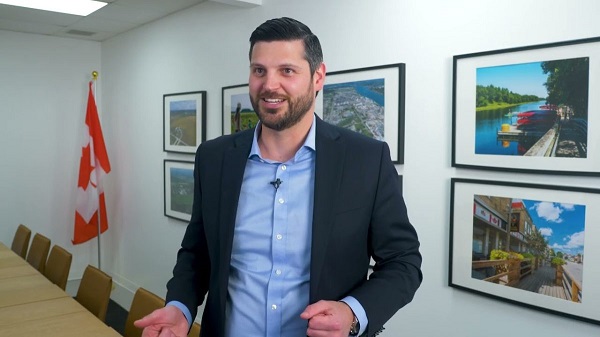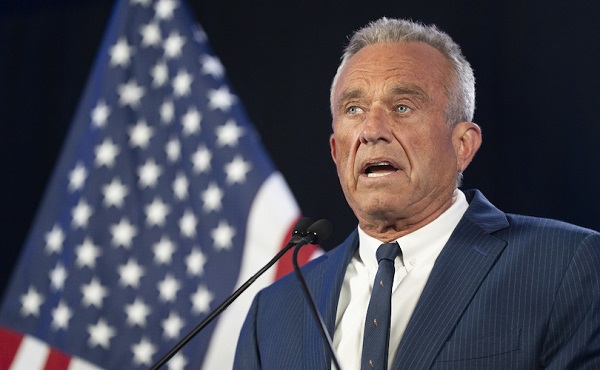Business
Canada can’t allow so many people to say ‘no’ to energy projects
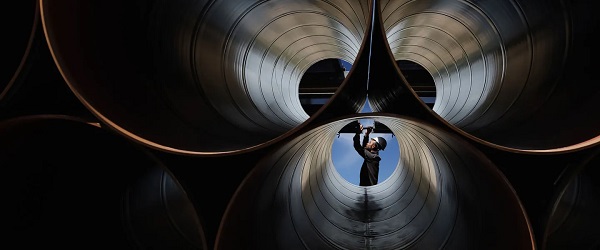
From the Fraser Institute
By Alex Whalen and Matthew D. Mitchell
In a nod to the importance of the energy industry, both the Liberals and Conservatives made promises in the recent election to cut red tape and speed the approval of major energy projects. To that end, the Carney government recently enacted Bill C-5, which gives the prime minister sweeping powers to override existing laws and regulations that might stand in the way of new projects.
While Prime Minister Carney, who continues to say he wants Canada to become an “energy superpower,” has properly diagnosed the problem (i.e. red tape in the approval process), but Bill C-5 is not the solution.
Let’s begin with the problem. In terms of living standards, despite its abundant natural resources and well-educated workforce, Canada has failed to keep up with its peer countries, in part because business investment has collapsed over the past decade due to bad policy including high regulatory burdens in the energy sector.
These regulatory burdens are steep because too many entities have the power to say no to new projects. It’s a tragedy of the anticommons. (The more familiar “tragedy of the commons” arises when too many people can access a commonly owned resource such as a fishery or a forest. Too much access to common resources can lead to overexploitation.)
In contrast, a tragedy of the anticommons arises when too many people can stop others from accessing a resource such as a market. With too many people wielding veto power, resources may be underutilized.
Across Canada, a long list of natural resource projects remain stalled or cancelled. They include pipelines headed west and east, natural gas developments, export terminals and mining opportunities. Again, the problem is that too many groups can say no and scuttle any one project.
For example, the Energy East pipeline. The idea of a west-east pipeline rose to prominence in the early 2010s after the U.S. government put the Keystone XL pipeline on hold. Rather than selling oil at a discount to the Americans, the thought was that oil-producing western provinces could ship oil across the country by pipeline to refineries on the east coast, which are currently forced to import most of their oil from foreign countries due to a lack of pipeline and rail capacity in that part of Canada. But while a west-east pipeline seemed like a no-brainer, several opponents including First Nations and environmental groups urged the federal government and several provincial governments to kill the project. In the midst of this uncertainty, the TransCanada Corporation cancelled the project in 2017.
Fast-forward to today. As Trump’s trade war threatens Canada’s ability to rely on U.S. energy products including oil, the idea of reviving Energy East may be gaining steam. But proponents must first eliminate the tragedy of the anticommons that killed the project eight years ago.
Here’s how the tragedy unfolds. For starters, the project’s proponents must satisfy conditions of the Impact Assessment Agency of Canada, the federal government’s energy regulator, unless the government uses Bill C-5 to override those conditions. The last time around (under the former National Energy Board), the process was fraught with setbacks.
Second, assuming the project gets past the federal review, it may or may not need the approval of many Indigenous groups. While the Supreme Court has repeatedly said the “duty to consult” these groups does not give them a veto, leading scholars such as Tom Flanagan argue that the power conferred on these groups to delay and create uncertainty creates an effective veto. With Energy East set to cross the traditional territories of approximately 180 different Indigenous groups, any approval process requiring unanimity will kill the project. The Trudeau government’s decision to enshrine the United Nations Declaration on the Rights of Indigenous Peoples (UNDRIP) into Canadian law in 2021 (and a later federal court decision to apply UNDRIP to the interpretation of Indigenous rights vis-a-vis the Charter of Rights and Freedoms) further complicate the matter.
Third, in addition to the official federal regulatory process and Indigenous consultation, provinces, municipalities and vocal environmental groups can each apply their own brakes.
Writing in the industry publication Energy Regulation Quarterly, researcher Ron Wallace summarized the situation: “When a federation dissolves into narrow definitions of federal, provincial and local government interests, the number of hands in the pot increases the complexity of issues for everyone… The result is a complex, often contradictory and competing web of legislative and regulatory tools whose resolution cannot reasonably be achieved by continuous references to federal courts.”
In a free and democratic society, each of these stakeholders has the right to voice their concerns. But to the extent that these voices become vetoes, they represent an impossible burden for any project to overcome.
Unfortunately, Bill C-5 doesn’t address this problem. Instead of eliminating all veto points, it allows the prime minister to pick and choose which veto points to override and which to enforce. This level of unilateral power courts favouritism and corruption.
If Canada is to truly become an energy superpower it must solve the tragedy of the anticommons. And to do that, it must eliminate all overlapping veto points for all projects. This will be a massive task requiring stern political will. But Canada’s future relies on its ability to produce and transport its own energy.

Matthew D. Mitchell
Business
Poilievre: “Carney More Irresponsible Than Trudeau” as Housing, Jobs, and Energy Failures Mount
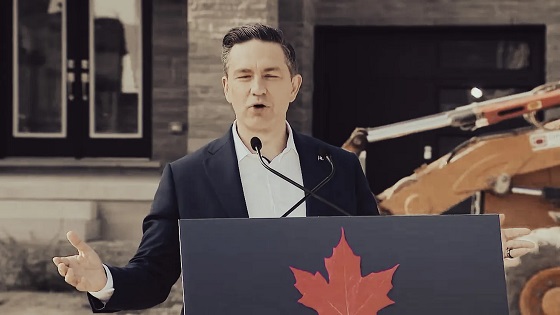
50,000 lost manufacturing jobs, 86,000 more unemployed, soaring housing costs, and blocking every LNG project while vowing to end the TFW program
Pierre Poilievre opened his press conference with a direct attack on Mark Carney and the Liberal record on housing, framing the crisis as the product of government mismanagement rather than market forces.
He began by pointing to Conservative MP Scott Aitchison, a former mayor, as an example of what can be done when local leaders “cut the taxes and the development charges and the wait times so that building can happen.” Then came the pivot: “What a contrast with Justin Trudeau — excuse me, with Mark Carney,” he said, before slamming Carney’s choice of Gregor Robertson as housing minister. Robertson, he reminded the crowd, presided over a 149% increase in Vancouver housing costs and more than doubled homebuilding taxes. Carney, Poilievre said, rewarded that record by handing him the national housing file.
The setting itself — Deco Homes, a family-run builder founded by Italian immigrants — was chosen deliberately. Poilievre praised the Gasper family for their role in building Canada’s homes and businesses, but then asked whether such families could do the same today. His answer was no. “After a decade of Liberal taxes, Liberal spending, out-of-control Liberal immigration, reckless crime policies… the Canadian promise is really broken.”
From there, he broadened the attack. He spoke of an entire generation priced out of homeownership, of immigration growing “three times faster than housing and jobs,” of crime rising, and of what he called “the worst economy in the G7.” And then he turned squarely on Carney: “Mr. Carney is actually more irresponsible than even Justin Trudeau was,” citing an 8% increase in government spending, 37% more for consultants, and 62 billion dollars in lost investment — the largest outflow in Canadian history, according to the National Bank.
The message was simple: Liberals talk, Conservatives build. Poilievre painted Carney as a man of speeches and promises, not results. “The mistake the media is making is they’re judging him by his words rather than his deeds,” he said.
It was an opening statement designed less to introduce policy — those details came later — and more to frame the battle. For Poilievre, Carney isn’t just Trudeau’s replacement. He’s Trudeau’s sequel, and in some ways worse.
During the Q and A portion of the presser; Pierre Poilievre was pressed on immigration today, and what he said was blunt. Canada, he argued, once had the “envy of the world” system: immigrants came in at numbers the country could absorb. There were jobs, housing, health care. Everyone integrated. Ten years later? He says the Liberals have destroyed that.
The facts he used were stark. According to Poilievre, Canada is bringing in people three times faster than homes and jobs are being created. He accused the government of allowing “massive abuses” of the international student program, the Temporary Foreign Worker program, and asylum claims, with what he called “rampant fraud” right under Ottawa’s nose.
He tied this directly to the economy: youth unemployment, he said, is the worst in three decades. At the same time, employers are importing more temporary foreign workers than ever, this year at a record high and using them for cheap labor under poor conditions. His line: “While our young people can’t find jobs, employers are able to exploit temporary foreign workers by giving them lower wages and terrible working conditions.”
But here’s the part that stands out politically. Poilievre said, “Immigrants are not to blame.” He put the responsibility squarely on Liberal governments, calling their immigration numbers “reckless and irresponsible.”
His fix? End the Temporary Foreign Worker program. Cut immigration levels back to “the right numbers and the right people” to fill jobs Canadians can’t do. Tighten border standards to keep criminals out. And, in his words, “always and everywhere put Canada first.”
Pierre Poilievre didn’t hold back when asked about Mark Carney’s record. His words: “Mr. Carney is actually more irresponsible than even Justin Trudeau was.” That’s not a throwaway line, he backed it with numbers.
According to Poilievre, Carney inherited what he called a “morbidly obese government” from Trudeau and made it worse: 8% bigger overall, 37% more for consultants, and 6% more bureaucracy. He says Carney’s deficit is set to be even larger than Trudeau’s.
Then the jobs number: 86,000 more unemployed people under Carney than under Trudeau. That, Poilievre argued, is the real measure, not the polished speeches Carney gives. His line: “The mistake the media is making is they’re judging him by his words rather than his deeds.”
He also went after Carney for what hasn’t happened: “He has not approved a single major national project.” Meanwhile, Poilievre says food price inflation is even worse today, crime policy hasn’t changed the same “catch and release” approach and every big promise Carney made has already been broken.
Pierre Poilievre was asked about Ukraine, and his answer wasn’t about speeches or handshakes in Brussels. It was about pipelines.
“The best way to put Canada first while helping Ukraine is to sell our oil and gas in Europe.” His argument: Vladimir Putin bankrolls his war because Europe still buys his fuel. Poilievre said if Canada had built the Energy East pipeline, we’d be shipping a million barrels of oil a day to Europe right now.
He went further: approve LNG plants immediately, liquefy tens of billions of dollars of Canadian gas, and ship it overseas to “fully displace” Russian sales. His line: “Instead of the money going to Putin’s war machine, it will go to the trades workers in this country.”
And then the indictment of the Liberals: “Mark Carney and the Liberals have blocked every single LNG project that has been put before them. As a result, we only have one plant and it was approved by Stephen Harper.”
So the contrast is stark. Carney talks about climate virtue. Poilievre says: build pipelines, sell fuel, kill Putin’s war economy, and pay Canadian workers. His closer: “That is how you put Canada first.”
Final Thoughts
So let’s just be honest. Under Mark Carney’s leadership, the numbers aren’t just bad they’re devastating. In a matter of months, Canada has lost 50,000 manufacturing jobs. These are not low-skill jobs; they are the backbone of the economy, the kind of work that built the middle class in this country. Add to that another 86,000 unemployed overall compared to when he took office. This is what Carney calls stability.
Now, if you’re a Temporary Foreign Worker, life looks pretty good. Ottawa has built an entire system around you cheap wages, little recourse, and companies happy to import you as disposable labor. If you’re a Carney insider, it looks even better. The government is 8% bigger than when Trudeau left, consultants are raking in 37% more, the bureaucracy is swelling. It’s one of the greatest insider rackets in modern Canadian politics.
But if you’re part of Canada’s middle class, if you’re a young person trying to buy a home, if you’re a worker trying to hold onto a job in a plant, a mill, or a construction site you are being hollowed out. You’re watching your wages stagnate, your housing costs explode, your jobs disappear overseas or into government-mandated “green transitions.” And when you ask for answers, what do you get? You get Patty Hajdu telling you not to be afraid of robots. You get Mark Carney telling you his deficits are “investments.” You get speeches about “climate virtue” and “AI literacy” while your livelihood collapses.
That’s the contrast Poilievre is trying to draw. On immigration, he says: let’s end the Temporary Foreign Worker scam, bring people in at a pace we can actually house and employ, and put Canadian workers first. On energy, he says: build the pipelines, approve the LNG projects, and stop funding Putin’s war by leaving Europe dependent on Russian fuel. On the economy, he says: stop measuring success by the size of government or the smoothness of a prime minister’s speeches, and start measuring it by the number of Canadians who can work, buy homes, and raise families in their own country.
So the choice is simple. Carney offers more of the same consultants, insiders, deficits, slogans, and the slow managed decline of a once-prosperous nation. Poilievre is offering something completely different: a chance to reverse the hollowing out of the middle class and to put Canadian jobs, Canadian energy, and Canadian sovereignty first.
If you’re an insider, Carney’s Canada works just fine. If you’re a middle-class Canadian, it’s a disaster. And that, in the end, is the dividing line in this country.
Subscribe to The Opposition with Dan Knight .
For the full experience, upgrade your subscription.
Business
Health-care costs for typical Canadian family will reach over $19,000 this year

From the Fraser Institute
By Nadeem Esmail, Nathaniel Li and Milagros Palacios
A typical Canadian family of four will pay an estimated $19,060 for public health-care insurance this year, finds a new study released today by the Fraser Institute, an independent, non-partisan Canadian public policy think-tank.
“Canadians pay a substantial amount of money for health care through a variety of taxes—even if we don’t pay directly for medical services,” said Nadeem Esmail, director of health policy studies at the Fraser Institute and co-author of The Price of Public Health Care Insurance, 2025.
Most Canadians are unaware of the true cost of health care because they never see a bill for medical services, may only be aware of partial costs collected via employer health taxes and contributions (in provinces that impose them), and because general government revenue—not a dedicated tax—funds Canada’s public health-care system.
The study estimates that a typical Canadian family consisting of two parents and two children with an average household income of $188,691 will pay $19,060 for public health care this year. Couples without dependent children will pay an estimated $17,338. Single Canadians will pay $5,703 for health care insurance, and single parents with one child will pay $5,934.
Since 1997, the first year for which data is available, the cost of healthcare for the average Canadian family has increased substantially, and has risen more quickly than its income. In fact, the cost of public health care insurance for the average Canadian family increased 2.2 times as fast as the cost of food, 1.6 times as fast as the cost of housing, and 1.6 times as fast as the average income.
“Understanding how much Canadians actually pay for health care, and how much that amount has increased over time, is an important first step for taxpayers to assess the value and performance of the health-care system, and whether it’s financially sustainable,” Esmail said.
The Price of Public Health Care Insurance, 2025
- Canadians often misunderstand the true cost of our public health care system. This occurs partly because Canadians do not incur direct expenses for their use of health care, and partly because Canadians cannot readily determine the value of their contribution to public health care insurance.
- In 2025, preliminary estimates suggest the average payment for public health care insurance ranges from $5,213 to $19,060 for six common Canadian family types, depending on the type of family.
- Between 1997 and 2025, the cost of public health care insurance for the average Canadian family increased 2.2 times as fast as the cost of food, 1.6 times as fast as the average income, and 1.6 times as fast as the cost of shelter. It also increased much more rapidly than the average cost of clothing, which has fallen in recent years.
- The 10 percent of Canadian families with the lowest incomes will pay an average of about $702 for public health care insurance in 2025. The 10 percent of Canadian families who earn an average income of $88,725 will pay an average of $8,292 for public health care insurance, and the families among the top 10 percent of income earners in Canada will pay $58,853.
-

 Crime19 hours ago
Crime19 hours agoCharlie Kirk ASSASSINATED
-
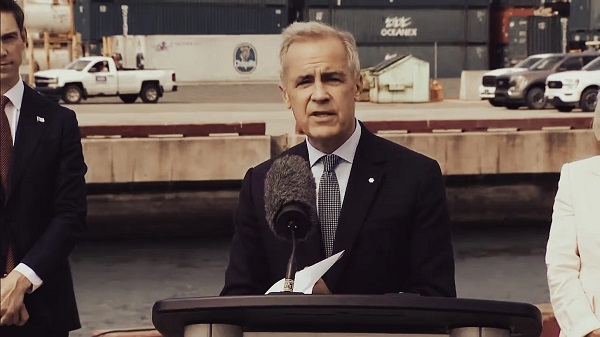
 Business2 days ago
Business2 days agoMark Carney’s Climate Competitiveness Pitch Falls Flat
-

 Business1 day ago
Business1 day agoPoilievre: “Carney More Irresponsible Than Trudeau” as Housing, Jobs, and Energy Failures Mount
-
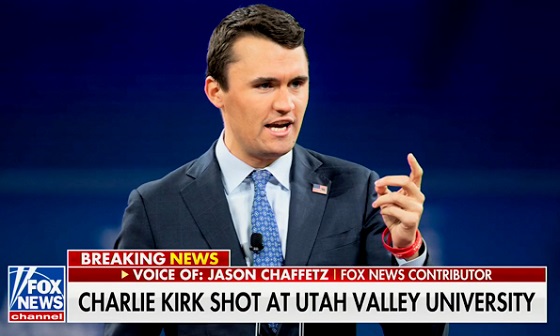
 Crime21 hours ago
Crime21 hours agoConservative speaker and celebrity Charlie Kirk shot during Q & A event at Utah Valley University
-

 Alberta1 day ago
Alberta1 day agoProvince urging post secondary students to apply for loans, grants, scholarships, bursaries and awards
-
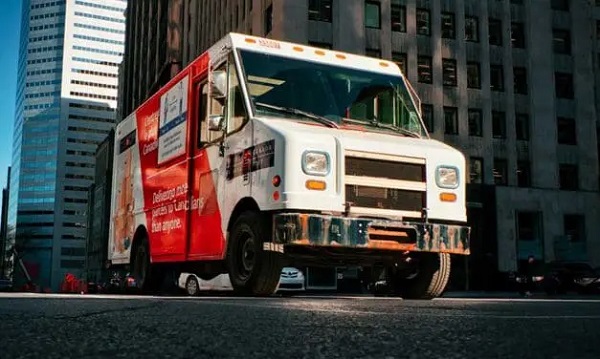
 Business2 days ago
Business2 days agoCanada Post is broken beyond repair
-

 Alberta2 days ago
Alberta2 days agoYes Alberta has a spending problem. But it has solutions too
-
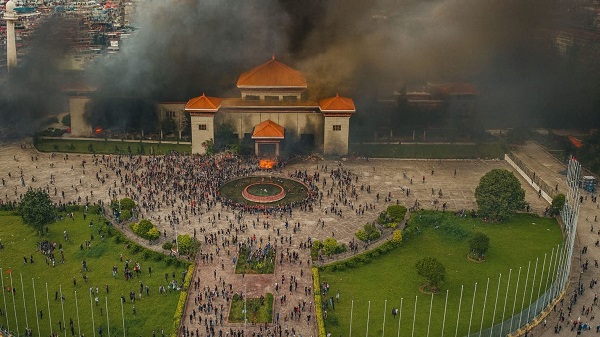
 International1 day ago
International1 day agoNepal Tried To Censor The Internet. Young People Set Parliament on Fire.









